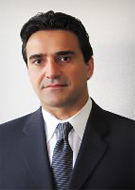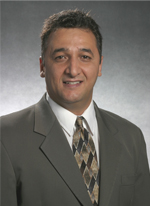
Transportation Engineering at SEAS
 Center for Intelligent Systems Research (CISR): The CISR was chartered GW in 1996 to conduct fundamental and applied research in intelligent, dynamic systems and controls. The major areas of focus are automotive and transportation engineering, intelligent vehicles and transportation systems, active safety, driver assistance, and traffic and network engineering with an emphasis in human safety. CISR operates three research laboratories: 1) the Passenger Car Driving Simulator, 2) the Truck Driving Simulator, both for human-in-the-loop modeling and the development of semi-autonomous vehicle control strategies, and 3) the Traffic and Networks Research Laboratory, which includes a fully instrumented vehicle for research in naturalistic human/driver behavior in traffic.
Center for Intelligent Systems Research (CISR): The CISR was chartered GW in 1996 to conduct fundamental and applied research in intelligent, dynamic systems and controls. The major areas of focus are automotive and transportation engineering, intelligent vehicles and transportation systems, active safety, driver assistance, and traffic and network engineering with an emphasis in human safety. CISR operates three research laboratories: 1) the Passenger Car Driving Simulator, 2) the Truck Driving Simulator, both for human-in-the-loop modeling and the development of semi-autonomous vehicle control strategies, and 3) the Traffic and Networks Research Laboratory, which includes a fully instrumented vehicle for research in naturalistic human/driver behavior in traffic.
 Traffic and Networks Research Laboratory: The GW Traffic and Networks Research Laboratory (TNRL) team is involved in advanced theoretical and applied research tasks in the area of traffic flow theory and control, evacuation management, and pedestrian/driver behavioral modeling and detection. The lab's models enable decision makers to create less congested, more sustainable and safer transportation systems. In addition to modeling, the TNRL research team focuses on understanding Vehicle to Vehicle (V to V), Vehicle to Infrastructure (V to I) , Vehicle to Pedestrian (V to P) and Pedestrian to Infrastructure (P to I) interactions and communication systems. Data obtained from traffic sensors, a vehicular driving simulator and an instrumented vehicle are utilized for such purpose.
Traffic and Networks Research Laboratory: The GW Traffic and Networks Research Laboratory (TNRL) team is involved in advanced theoretical and applied research tasks in the area of traffic flow theory and control, evacuation management, and pedestrian/driver behavioral modeling and detection. The lab's models enable decision makers to create less congested, more sustainable and safer transportation systems. In addition to modeling, the TNRL research team focuses on understanding Vehicle to Vehicle (V to V), Vehicle to Infrastructure (V to I) , Vehicle to Pedestrian (V to P) and Pedestrian to Infrastructure (P to I) interactions and communication systems. Data obtained from traffic sensors, a vehicular driving simulator and an instrumented vehicle are utilized for such purpose.
The National Crash Analysis Center (NCAC)

Dr. Cing-Dao (Steve) Kan

Dr. Dhafer Marzougui

Dr. Kennerly Digges
Roadside Safety Research: This research utilizes computer modeling and simulation with full-scale crash testing to investigate highway safety issues, to identify potential safety problems and recommend countermeasures, and to explore innovative modeling methodologies and conduct parametric studies to optimize design performance of highway safety systems. (Dhafer Marzougui, Cing-Dao Kan)
Dynamic Rollover Research: This research activities focus on using real-world crash accident data coupled with computer modeling and simulation methods to investigate causation of vehicle dynamic rollover accidents and to understand injury mechanisms of occupants in rollover crashes. The research also extends to the design of a dynamic testing system that is capable of capturing the mechanical responses of vehicles in different initial roll conditions as well as measuring occupant responses in these rollover conditions. (Ken Digges, Cing-Dao Kan)
Vehicle, Barrier System, and Occupant Modeling: This research focuses on the development of high fidelity, detailed computer simulation models of vehicle, barrier system, and occupant for vehicle crashworthiness applications. State-of-the-art scanning techniques combined with material coupon and component tests are used to fully characterize the material property and response of the vehicle, barrier, and mechanical dummy. Full-scale crash test data are used to fully calibrate and validate these models for variety of transportation safety related applications. (Cing-Dao Kan, Dhafer Marzougui)
Ballistic Impact & Aircraft Engine Modeling:In research, an aircraft fan-rig model is developed to simulate the fan blade-out release, fan blade-out interaction with fan case, and fan blade-out prediction using computer simulation. Advanced constitutive material and failure models are developed to capture the strain rate and temperature dependence as well as finite element mesh sensitivities in these fan blade-out applications. (Cing-Dao Kan)
Vehicle Accident Analysis: This research activity is concentrated on applying data analysis methods and data mining techniques to real world crash accident data to understand the injury causation and injury mechanism of accident occurred in different crash conditions. Investigations involves multiple accident modes, different vehicle types, and selected highway systems, as well as, roadside safety devices. Occupant, such as child and elderly female are also be considered in these analyses. (Ken Digges, Dhafer Marzougui, Cing-Dao Kan)
Faculty information for Cing-Dao Kan, Ken Digges, and Dhafer Marzougui is available at: www.ncac.gwu.edu/directory.html.